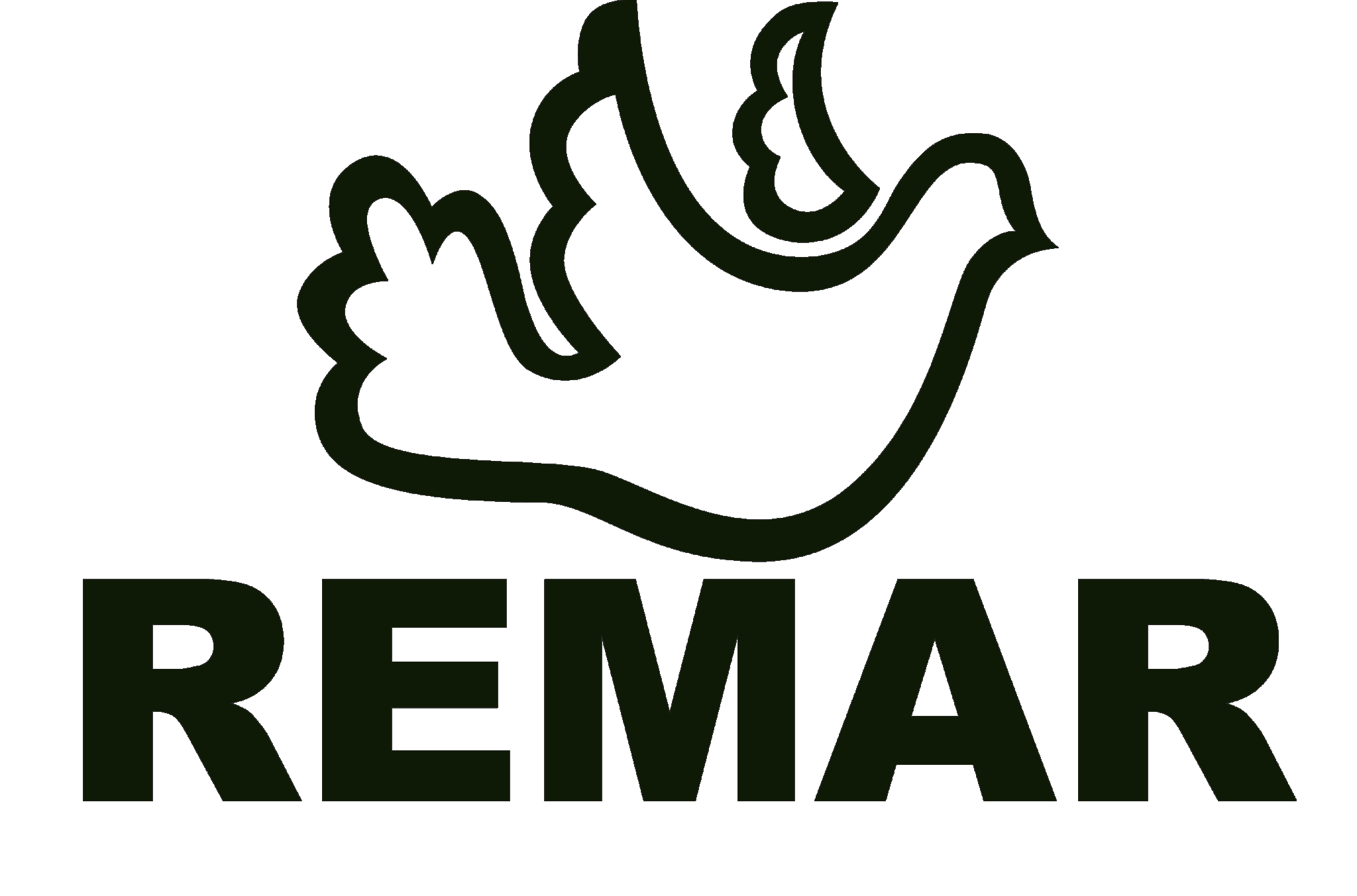SEO – Web design – Google Ads – Social media
Recruiting with SEO strategy: Find the talent that will drive your company forward
We combine recruiting expertise with targeted online marketing to reach the best specialists directly.
Are your vacancies going unnoticed by top candidates?
Recruiting is a central building block for the sustainable success of any company. However, in a dynamic business world where qualified specialists are in short supply, effective recruiting is becoming a decisive competitive advantage. Standard job advertisements often fail to reach the right talent or get lost in the crowd.
This is exactly where SEO Marketing GmbH comes in. Our expertise in recruitment goes beyond traditional methods. We understand that top candidates today often search like customers – online, targeted and demanding. That’s why we use proven online marketing principles for your recruiting.
Individual marketing solutions
AI SEO
With AI, you get intelligent suggestions, data-based insights and automated SEO optimization.
Local SEO
We increase your local visibility, strengthen your presence on Google and gain new regular customers.
Onpage SEO
We optimize the structure, content and technology of your site for maximum performance and top rankings.
Content Marketing
With targeted content, we strengthen your brand, increase visibility and attract qualified customers.
Google My Business
We optimize your profile on Google, increase your local reach and ensure more inquiries.
International SEO
We bring your website to the forefront worldwide with smart SEO and secure top rankings in all markets.
Analyze your website for free – more visibility now!
Have your website analyzed free of charge and discover optimization potential immediately. Get a quick SEO check with clear tips for better rankings, more visibility and more customers - free of charge, professionally and without obligation.
From passive searching to actively finding the best
The goal is clear: you don’t want to hire just anyone, but the best candidates who will really strengthen your team and your company. It’s about attracting attention, presenting your company as an attractive employer and ensuring a smooth application process.
With targeted SEO strategies and optimized landing pages in the careers section, we ensure that your vacancies are visible precisely when potential candidates – including passive candidates – are looking for new challenges. We manage the entire process from target definition to keyword research (What are engineers looking for? What are sales professionals looking for?) to publication.
Learn more
Recruiting – SEO Marketing
Recruiting is a central building block for the sustainable success of any company. In a dynamic business world where qualified specialists are in short supply, effective recruiting becomes a decisive competitive advantage. Our expertise in recruitment goes beyond traditional methods. With targeted SEO strategies and optimized landing pages in the career section, we ensure that your job offers attract the attention of the best candidates. We manage the entire process from target definition to keyword research to posting on various platforms, including job boards, social media and more. Our holistic approach also includes candidate support, feedback management and the use of various portals such as LinkedIn, Xing and Indeed. Rely on our recruiting expertise to strengthen your team with the best talent and put your company on a sustainable path to success.
Job portals: Your gateway to talent
Our targeted use of various job portals is the key to getting your vacancies in front of the right candidates. We use a variety of platforms to achieve maximum visibility for your vacancies. From industry-specific portals such as Stepstone and Indeed to professional networks such as LinkedIn and Xing – we carefully select the platforms based on your target group and the specific requirements of your positions. We also use social media such as Facebook and Instagram to make your vacancies accessible to a wider audience. Our expertise covers the entire spectrum from free to paid job portals. This ensures that we respond flexibly to your needs and adapt to your financial framework conditions. We not only take care of the creation and publication of your job advertisements, but also the ongoing maintenance and adaptation to ensure that they are always up-to-date and appealing. We are also happy to manage feedback from applicants to make the application process as transparent, efficient and positive as possible.
Through the strategic use of job portals, we give you access to a large number of suitable employees who will strengthen your team and successfully advance your company.
Successful recruiting through social media ads
Social media has become an important tool in employee recruitment. Our social media ads are designed to strengthen your employer presence, place your job offers in a targeted manner and attract the attention of qualified talent. Our experts understand the dynamics of platforms such as Facebook, LinkedIn, Instagram, etc. Through targeted discussions with you, we develop ads that are not only visually appealing, but also authentically represent your unique corporate culture and career opportunities. We focus on appealing graphics, compelling messaging and precise targeting so that your ads reach exactly those who can help your team move forward. We not only develop campaigns, but also continuously monitor and analyze the performance of your social media ads. Through this ongoing analysis, we optimize ads to ensure they are always effective in the fast-changing world of social media.
Strategic landing pages for effective employee recruitment
Our customized landing pages in the Jobs/Career section offer an innovative strategy for employee recruitment. We will sit down with you to discuss your ideas and goals in detail. We then carry out a thorough keyword research and competitive analysis. Our experts not only optimize the content, but also create meaningful, search engine-optimized texts. The integration of relevant keywords, the creation of high-quality content and the adaptation to the requirements of search engines guarantee outstanding visibility for your career offers. With continuous adjustments and technical optimizations, we ensure that your landing pages are not only perceived positively by search engines, but also by potential applicants. With this comprehensive approach, we not only design landing pages, but also create targeted recruiting platforms that optimally position you as an employer in the digital space.
Successfully finding employees
Are you looking for qualified employees? SEO Marketing GmbH offers tailor-made solutions for your recruiting: SEO-optimized landing pages, publication of job advertisements and targeted social media ads. With our innovative strategies, you will not only find suitable specialists, but also secure decisive competitive advantages.
Discover the future of recruiting with SEO Marketing GmbH. Contact us today for innovative solutions and secure the best talent for your team – let’s shape your success together!
- Reach qualified applicants
- Innovative strategies for employee recruitment
- Find potential employees
- Posting job advertisements on job boards
- Recruiting suitable candidates
What is recruiting?
Recruiting is the process by which organizations actively search for qualified candidates to fill open positions. It includes various activities aimed at identifying, approaching, screening and hiring potential candidates. The goal of recruiting is to find and hire the best candidates for a specific position in order to support the performance and success of the organization.
Here are some key aspects of the recruitment process:
Needs analysis: The process begins with a precise analysis of a company’s personnel needs. This includes identifying vacancies, assessing the skills and qualifications required and defining the requirements and expectations of potential candidates.
Candidate search: Once staffing needs have been identified, recruiters actively search for potential candidates. This can be done through various channels, including job advertisements, online job boards, social networks, recruitment agencies, university and career fairs and internal referral programs.
Approaching and selecting applicants: Once potential candidates have been identified, they are approached and invited to apply. Applications are screened, resumes are reviewed and qualified candidates are selected for further steps in the selection process. This may include interviews, assessment tests, reference checks and background checks.
Interviews and assessment: The selected candidates are invited to interviews where their skills, experience and personality traits are assessed. The purpose of these interviews is to find out more about the candidates, assess their suitability for the position and check the fit with the corporate culture.
Recruitment and onboarding: Once the selection process has been successfully completed, the best candidates are selected and hired for the position. The onboarding process begins, where new employees are introduced to the company, receive training and are integrated into their new roles.
Recruiting is an important part of human resource management (HR) and contributes significantly to the long-term success of an organization. By identifying, attracting and hiring the right talent, organizations can ensure that they have the necessary skills and competencies to achieve their goals and drive growth.
How can you create an effective job advertisement that appeals to qualified candidates?
Creating an effective job ad that appeals to qualified candidates requires careful planning, clear communication and consideration of the needs and expectations of potential applicants. Here are some tips for creating a successful job ad:
Clear and concise headline: Use a powerful and concise headline to capture the interest of potential candidates and communicate the main purpose of the ad. The headline should emphasize the position and the key features of the job.
Requirements and qualifications: List clear requirements and qualifications for the position, including required education, work experience, skills and competencies. Make sure these requirements are realistic and relevant to the position to attract qualified applicants.
Description of duties and responsibilities: Provide a detailed description of the duties and responsibilities of the position to give applicants a clear picture of what is expected of them. Use clear and concise language to communicate the role and expectations of the prospective employee.
Insights into the company culture and values: Give potential candidates insights into the company culture and values to spark their interest in the position and the company. Describe the company philosophy, work environment and team dynamics to attract potential candidates who are a good fit for the organization.
Benefits and development opportunities: Emphasize the benefits of the position and the company, including compensation, benefits, work schedule flexibility, training opportunities and advancement opportunities. Show potential candidates how the position can contribute to their personal and professional development.
Clear instructions on the application process: Provide clear instructions on the application process, including contact information, application deadline and preferred method for submitting applications. Make sure potential applicants know how to apply and what documents are required.
Visual elements and formatting: Use appealing visual elements such as graphics, images and colors to attract the attention of potential applicants and improve the readability of the ad. Ensure clear and concise formatting to make the information easy to grasp.
By taking these tips into consideration and creating a well thought out and appealing job ad, you can attract qualified candidates and spark their interest in the position and the company. An effective job ad is an important first step in attracting potential candidates and making the recruitment process successful.
Which technologies and tools can support the recruiting process?
Technologies and tools can significantly support the recruiting process by increasing efficiency, optimizing the application process and improving communication with applicants. Here are some important technologies and tools that can be used in recruiting:
Applicant Tracking Systems (ATS): ATS are software solutions that help companies manage the application process, from application submission to hiring. They enable the management of applicant data, the screening of CVs, the planning of interviews, communication with applicants and the analysis of applicant data.
Job boards and career sites: Job boards such as LinkedIn, Indeed, Glassdoor and Monster offer companies the opportunity to publish job advertisements and approach applicants. In addition, companies can create their own career pages on their website to present vacancies and collect applications.
Social media platforms: Social media platforms such as LinkedIn, Facebook, Twitter and Instagram are increasingly being used as recruiting tools to target potential candidates and draw attention to job openings. Companies can place targeted ads to attract candidates with specific qualifications and interests.
Video interview platforms: Video interview platforms such as Zoom, Microsoft Teams and HireVue allow companies to conduct interviews virtually and interview candidates remotely. This saves time and costs for traveling and allows companies to reach candidates from all over the world.
Candidate assessment and scoring tools: Candidate assessment and scoring tools allow recruiters and hiring managers to track and evaluate candidate performance during the selection process. This can facilitate objective decision making and improve the quality of hires.
Artificial intelligence (AI) and machine learning (ML): AI and ML technologies can be used in recruiting to analyse applicant data, recognize patterns, perform automated screening and matching processes and make personalized recommendations for open positions. These technologies can optimize the recruiting process and increase efficiency.
Mobile recruiting apps: Mobile recruiting apps allow applicants to apply for open positions and communicate with recruiters and hiring managers from their mobile devices. These apps provide a user-friendly and flexible way for applicants to manage the application process.
By using these technologies and tools, companies can optimize their recruiting process, increase efficiency and target and hire qualified candidates more effectively. It is important to consider the needs and requirements of the organization and select the right technologies and tools that best fit the specific recruiting goals and strategies.
Introduction to modern recruiting
Recruiting, the heart of any HR strategy, has evolved significantly over the years and is now more critical than ever to the success of an organization. Effective recruitment not only helps to attract the best talent to an organization, but also strengthens corporate image and supports sustainable growth. In today’s fast-paced and globally networked working world, modern recruiting is no longer just a function of HR, but a strategic component that is closely intertwined with the company’s overall strategy.
In the past, recruiting methods were often reactive and limited to local talent pools. Employees were mainly recruited through newspaper advertisements or personal networks. With digitalization and the advent of the internet, however, the picture has changed fundamentally. Platforms such as LinkedIn, Xing and various job boards have extended the reach of recruitment efforts and improved the speed and efficiency of the process. These digital tools now enable recruiters to actively search for suitable candidates instead of waiting for them to get in touch themselves.
The importance of effective recruitment is not only reflected in the quality of the employees hired, but also in the reduction of staff turnover and the improvement of employee retention. A precise match between the skills of the candidates and the requirements of the job promotes job satisfaction and performance. It has also been shown that a fast and transparent recruitment process has a positive impact on employer branding by conveying an image of professionalism and efficiency.
Applicants’ expectations have also changed over time. Younger generations in particular expect an application process that is not only fast and efficient, but also interactive and engaging. This has led to another innovation in recruiting: the use of AI technologies. Artificial intelligence is increasingly being used to automate application processes, from the pre-selection of candidates to the initial contact.
All in all, modern recruiting has the potential to create a dynamic environment that offers benefits for both companies and applicants. By continuously adapting to new technologies and taking into account the changing expectations of the workforce, recruiting remains a crucial factor for corporate success in a changing world.
The role of technology in the recruiting process
The role of technology in the recruitment process has evolved dramatically over the past few decades and now offers a variety of ways in which companies identify, approach and hire talent. Digital tools and innovative technologies have not only changed the efficiency and reach of recruiting, but also the way companies interact with potential candidates.
The digitalization of recruitment enables companies to react faster and more specifically to the dynamic requirements of the labour market. Online platforms and recruitment software make it easier to process large volumes of applicant data, which speeds up the selection process. A key feature of digital recruiting tools is their ability to automate. Many repetitive and time-consuming tasks, such as reviewing CVs and pre-selecting candidates, can be made more efficient using algorithms. This leads to significant time savings and allows recruiters to focus on more strategic aspects of the recruitment process.
Applicant Tracking Systems (ATS) are another decisive step forward. These systems not only help to manage applications, but also optimize communication between recruiters and applicants. By integrating ATS, companies can make the application process seamless while ensuring that no promising candidates are overlooked.
In addition, artificial intelligence (AI) and machine learning are revolutionizing recruiting by providing more precise matching algorithms that improve the accuracy of fit between job requirements and candidates’ skills. AI can also be used to predict candidate success and retention, increasing employee loyalty and satisfaction in the long term.
An innovative example of recruiting technologies are chatbots that are integrated into the recruiting process. These can answer inquiries from applicants around the clock, close information gaps and even conduct pre-qualifying interviews. This improves the applicant experience and increases the efficiency of recruiting.
Overall, digital tools and innovative technologies have transformed the traditional recruiting model. Not only do they offer new ways to recruit talent efficiently, but they also improve the quality of hiring decisions and optimize the candidate experience, which is crucial in the modern working world.
Optimization of the job advertisement
Optimizing job ads is a crucial factor in the recruitment process, as a well-worded ad can have a significant impact on the quality and quantity of applications. A targeted and clear text not only helps to attract the right candidates, but also increases the visibility of the ad through search engine optimization (SEO).
Tips for formulating effective job advertisements
- Use clear job titles: The job title should be precise, professional and without creative variations to maximize findability and avoid misunderstandings.
- Clear and concise description: The job description should clearly define what is expected of applicants and what the job entails. It is important to clearly separate technical requirements from desirable qualifications.
- Emphasize a positive corporate culture: Potential applicants are not only interested in the technical details of the job, but also in the working atmosphere and corporate culture. A section highlighting these aspects can make the ad more attractive.
- Include a call to action: At the end of the ad, there should be a clear call to action that encourages the applicant to apply and indicates what steps are required to do so.
- Ensure mobile optimization: Since many job seekers search for jobs on mobile devices, it should be ensured that the ads are easy to read and navigate on mobile devices.
Importance of SEO in job advertisements
SEO is crucial to increase the visibility of job ads in search engines. A well-optimized ad will appear higher in search results, increasing the likelihood that the right candidates will find it. Here are some key elements for SEO optimization of job ads:
- Integrate relevant keywords: Keywords that potential applicants might use in their job search should be included in the title, headings and text of the ad.
- Use location-based keywords: Since many job seekers are looking for positions in specific geographic regions, location-based keywords can improve local findability.
- Optimize metadata: The meta description displayed in the search results should concisely summarize the key aspects of the job and contain relevant keywords.
- Internal and external links: Links from high-quality websites can increase the authority and credibility of the job ad. Similarly, linking from the job ad to relevant pages on your own website helps to improve the user experience and provide relevant contextual information to search engines.
By applying these principles, companies can optimize their job ads not only for the target audience, but also for search engines, which ultimately leads to a higher number of applicants and better chances of being hired.
Improve the candidate experience
Improving the candidate experience is a key aspect of a successful recruitment process. A positive candidate experience not only influences a candidate’s decision to accept an offer, but also strengthens a company’s employer branding and overall attractiveness on the job market. This approach not only improves the quality of applications, but can also have a positive long-term impact on employee retention.
Importance of a positive applicant experience
A positive candidate experience plays a key role in reinforcing a company’s image as a preferred employer. Studies show that candidates who have had a positive experience during the application process are more likely to accept a job offer, recommend the company to others or apply again in the future. A negative experience, on the other hand, can lead to applicants refraining from applying and sharing their negative experiences on social networks and review platforms, which can damage the company’s reputation.
Steps to optimize the application process
- Improve communication: Clear and regular communication is key. Applicants should be kept up to date on the status of their application, ideally via automated systems that inform them of the next steps.
- Simplify the application process: A complex or lengthy application process can put off potential applicants. Companies should therefore make sure that their application forms are easy to understand and complete and that the entire process does not take longer than necessary.
- Implement feedback processes: Regardless of whether a candidate receives a job offer or not, it is important to give them feedback on their application. This shows appreciation and respect and can help to strengthen the company’s image as a fair and attractive employer.
- Use technology: Implementing technologies such as AI-based chatbots for initial screening interviews or digital assessment tools can not only make the process more efficient, but also increase candidate engagement.
- Take a personalized approach: Personalizing the recruiting process, for example through personalized emails or calls, can help create a stronger connection between the candidate and the company.
- Include the onboarding process: A seamless transition from recruiting to onboarding is crucial for a continued positive candidate experience. Preparatory measures, such as providing necessary information before the first day of work, can help to integrate new employees effectively.
By implementing these steps, companies can ensure that the application process is not only efficient, but also candidate-friendly. This promotes a positive perception of the company among applicants and improves the quality and loyalty of recruited employees in the long term.
Social media recruiting
Social media recruiting has established itself as an effective method of attracting talent in today’s digitally connected world. Using social media allows companies to expand their reach, target candidates and strengthen their employer brand. This approach can not only improve the visibility of job offers, but also provide valuable insights into the personality and skills of potential employees.
Use of social media to attract talent
Social media provides a platform for companies to engage directly with potential candidates. This is often done by sharing job advertisements, company news and insights into the company culture. Platforms such as LinkedIn, Facebook, Twitter and even Instagram can be used to reach a wide range of talent. LinkedIn in particular is often used for targeted searches for qualified professionals due to its professional focus. The ability to reach exactly the right candidate profiles through targeted advertising and specialized recruiting tools such as LinkedIn Recruiter is a significant advantage.
Best practices in social media recruiting
- Create target group-oriented content: Content should be specifically tailored to the platform and the target group. For example, professional posts and career articles are suitable for LinkedIn, while Instagram should focus more on visual insights into company life.
- Promote engagement: Interactions through comments, likes and shares are essential for the visibility of posts. Companies should actively seek communication with followers and respond to comments and questions promptly.
- Maintain authenticity: The company’s presentation on social media should be authentic. Potential candidates appreciate honest insights into the working environment and corporate culture.
- Measure success and adapt strategies: Monitoring metrics such as reach, engagement and conversion rates is crucial to assessing the success of social media campaigns and making adjustments where necessary.
Case studies
- Dell uses LinkedIn for targeted recruiting: Dell relies on LinkedIn Recruiter to reach specific talent pools and uses LinkedIn Insights to measure and optimize the effectiveness of their strategies.
- Zappos’ social media campaign “Inside Zappos”: Zappos has launched an innovative social media campaign in which employees talk about their experiences at Zappos, providing an authentic and engaging representation of the company culture.
- Starbucks uses Twitter for recruiting: Starbucks uses its Twitter profile to share job postings and encourage interactions with applicants. The platform is also used to showcase the company culture through regular updates and employee stories.
By integrating social media into the recruitment process, companies can not only improve their visibility and employer branding, but also communicate and interact more effectively with potential candidates. This ultimately leads to an improved quality of applications and more efficient talent acquisition.
Employer branding strategies
Employer branding is a crucial component of modern recruiting that involves building a strong and appealing employer brand. Through targeted employer branding strategies, companies can not only position themselves as attractive employers, but also improve the quality and fit of applicants. This in turn has a direct impact on the effectiveness of recruitment and the long-term retention of employees.
Building a strong employer brand
- Clarity about corporate values and culture: The first step in building a strong employer brand is to define and clearly communicate the company’s corporate values, culture and vision. These should be authentic and consistently communicated both internally and externally.
- Employee involvement: Employees are the best ambassadors for the brand. Their involvement in the communication of the employer brand, for example through testimonials or participation in social media, can increase the credibility and attractiveness of the brand.
- Target group-oriented communication strategies: Communication should be tailored to the target groups that the company wants to reach. This includes using the right channels, addressing them with relevant messages and creating content that appeals to and engages the target group.
- Consistent presence across all channels: A consistent presentation of the employer brand across all communication channels helps to convey a uniform image. This includes both traditional media and digital platforms, including the company website and social networks.
Influence of employer branding on recruiting
A strong employer brand has numerous positive effects on recruiting:
- Increase the number of applicants: An attractive employer brand attracts more and better applications. Candidates are more inclined to apply to a company that is known as a desirable place to work.
- Improving the quality of applicants: Through targeted employer branding, companies not only attract more applicants, but also higher quality applicants who are better suited to the company’s values and culture.
- Reduction of recruiting costs: A strong employer brand can reduce the need for external recruiting services and lower the cost per hire, as more suitable candidates apply directly to the company.
- Improving employee retention: Employees who can identify with a company’s values and culture are more inclined to stay for the long term. This reduces fluctuation and the associated costs for recruiting and training new employees.
Effective employer branding therefore not only supports recruiting efforts, but also strengthens the overall corporate image. By investing in their employer brand, companies secure a competitive advantage in the battle for the best talent and contribute to sustainable corporate development.
Diversity and inclusion in recruiting
Diversity and inclusion in recruiting are more than just buzzwords today; they are critical to building innovative and resilient organizations. A diverse team can bring new perspectives and ideas that are essential for solving complex problems and fostering creativity. Inclusion ensures that all employees feel valued and can reach their full potential, which in turn increases employee retention and satisfaction.
The importance of diversity and inclusion
Diversity and inclusion in the workplace create an environment rich in different perspectives and experiences. Studies show that companies that are leaders in these areas have higher profitability and are better able to attract and retain top talent. A diverse workforce also allows companies to appeal to a broader customer base and operate more effectively in global markets.
Practical approaches to promoting diversity
- Unbiased job descriptions: Use language tools or software to help identify and eliminate bias in job ads so that ads are more neutral and appealing to a diverse group of applicants.
- Structured interviews: Implement standardized interview processes that ask every candidate the same questions. This helps to minimize interviewer bias and ensures a fairer assessment of all candidates.
- Diversity in recruitment panels: Ensure that the people conducting interviews or involved in decision making are diverse themselves. This can help to bring different perspectives into the selection process and reduce the likelihood of bias.
- Partner with organizations: Partner with organizations that focus on the advancement of minorities in the workforce. These partnerships can provide a valuable channel for recruiting candidates from underrepresented groups.
- Diversity and inclusion training: Provide regular training for your HR team and employees to raise awareness of diversity issues and understand how unconscious bias can affect the workplace.
- Monitoring and evaluation: Set clear goals for diversity and inclusion and regularly monitor your progress. This can be done by collecting and analyzing data on the composition of the workforce and the effectiveness of diversity initiatives.
By implementing these practical approaches, organizations can not only improve their recruiting processes, but also create a more inclusive and productive work environment. Diversity and inclusion are not one-off initiatives, but require continuous effort and commitment to achieve truly transformative results.
Recruiting analytics and KPIs
Recruiting analytics and the definition of key performance indicators (KPIs) are crucial elements for optimizing the recruiting process. By analyzing data, companies can identify areas of inefficiency, make improvements and increase the effectiveness of their recruiting strategies. A data-driven approach helps to make informed decisions and optimize resource allocation.
Important key figures in recruiting
- Time-to-hire: The time from the start of the job advertisement to the acceptance of an offer by a candidate. This metric helps to evaluate the efficiency of the recruiting process.
- Quality of Hire: The performance and contribution of a new employee to the company, often assessed after the first 6 to 12 months. This KPI is crucial for understanding the long-term value that a new hire brings.
- Cost-per-hire: The total cost of hiring a new employee, including advertising, recruiter salaries and other administrative expenses. This metric is important for budgeting and cost control.
- Candidate Experience: Candidate reviews of their application process, often collected through surveys after the process is complete. A positive experience can strengthen the employer brand and attract more qualified applicants.
- Offer Acceptance Rate: The ratio of accepted to submitted job offers. A low rate may indicate problems in positioning the company as an attractive employer.
Use of data to improve the recruiting process
Data analytics makes it possible to gain deeper insights into every aspect of the recruiting process and make informed decisions:
- Identification of bottlenecks: By analyzing time-to-hire, companies can understand which parts of the recruiting process are slowing down and make targeted improvements.
- Cost optimization: Cost-per-hire analysis helps companies to identify unnecessary expenses and find more efficient recruiting channels.
- Improve the quality of hire: By monitoring quality-of-hire, companies can review and adjust the effectiveness of their selection processes to attract the best talent.
- Increase Offer Acceptance Rate: Data can show why offers are rejected, helping to optimize the offer process and better align with candidate expectations.
- Promoting a positive candidate experience: By regularly collecting and analyzing candidate feedback, companies can identify areas that need to be improved to ensure a positive candidate experience.
By using recruiting analytics and KPIs strategically, companies can not only improve the efficiency and effectiveness of their recruiting processes, but also build a stronger and more attractive employer brand. These data-driven insights are essential for modern organizations that want to succeed in a competitive talent market.
Interview techniques and candidate selection
Interview techniques and candidate selection are crucial steps in the recruitment process that significantly influence the quality of new hires. By using effective interview methods and objective assessment criteria, companies can ensure that they select the best talent who are not only professionally qualified but also fit in with the corporate culture.
Effective interview methods
- Structured interviews: In this method, all candidates are asked the same questions in the same order. This promotes the fairness and objectivity of the process and makes it easier to compare the answers.
- Behavioral interviews: This technique is based on the assumption that past behavior is a good indicator of future behavior. Candidates are asked to give specific examples from their past that demonstrate relevant skills and behaviors.
- Competency-based interviews: These interviews focus on assessing specific skills or competencies that are essential to the position being filled. Questions are aimed at analyzing and evaluating the candidate’s skills.
- Panel interviews: Several interviewers interview a candidate at the same time. This can help to reduce bias and gain a more balanced view of the candidate.
- Situational interviews: Here, candidates are presented with hypothetical situations to see how they would handle them. This method provides insight into the candidate’s problem-solving behavior and decision-making skills.
Objective evaluation criteria for candidate selection
- Competency profiles: Define clear and specific criteria or competencies required for the position and assess each candidate against these. This helps to ensure consistency in the assessment and objectively measure suitability.
- Rating scales: Use standardized rating scales to evaluate the candidates’ answers. This promotes objectivity and makes it easier to compare different applicants.
- Blinded interviews: In this method, certain identifiable information such as name, age or gender is removed from the application documents in order to minimize prejudice.
- Peer reviews: Involving team members who would work with the candidate can help assess fit with the team dynamic and company culture.
- Follow up on references: Check references provided by candidates to gain an outside perspective on their accomplishments and behaviors.
By combining effective interview techniques with objective assessment criteria, companies can increase the likelihood of finding the right candidates for vacancies. This not only leads to better hiring decisions, but also to higher employee satisfaction and lower turnover rates.
The future of recruiting
The future of recruiting is a dynamic field shaped by technological advances, changing labor market conditions and the evolving expectations of employees and employers. Companies that respond effectively to these trends and adapt their recruiting strategies accordingly will be better positioned to attract and retain top talent.
Predictions and trends for the future of recruiting
- Increasing use of artificial intelligence (AI): AI will continue to play a central role in recruiting, from automating the screening of CVs to conducting initial interview rounds using chatbots. AI can help to respond more efficiently to a large number of applications while improving the quality of candidate selection.
- Data-driven recruiting: Decision-making in recruiting will be increasingly data-driven. Big data and analytical tools enable recruiters to make more precise predictions about the success of candidates and optimize the entire recruiting process.
- Personalization of the candidate experience: Personalized application processes that are tailored to the preferences and behaviour of candidates are becoming increasingly important. Technology makes it possible to offer each applicant a customized experience that takes their uniqueness into account and strengthens the bond with the company even before they are hired.
- Remote recruiting and virtual workplaces: The COVID-19 pandemic has accelerated the adoption of remote work and will permanently change the way recruiting is done. Virtual interviews and onboarding processes are becoming the norm, enabling companies to tap into talent pools globally.
- Diversity and inclusion: Companies will continue to increase their efforts to create more diverse and inclusive workplaces. This is not only a question of social responsibility, but also a critical factor in promoting innovation and creativity within the company.
Adaptation to changing labor market conditions
- Flexibility and adaptability: Companies need to remain flexible and adaptable in order to respond to changes in the economy and the labor market. This could mean that recruiting strategies are regularly reviewed and adapted to meet current challenges.
- Promote lifelong learning: Given the rapid development of new technologies and skills, promoting continuing education and lifelong learning will be a crucial aspect for companies to keep their employees’ skills up-to-date.
- Greater involvement of freelancers and external talent: With the rise of gig work and freelancing, companies will increasingly adopt more flexible working models that allow them to access talent that is not necessarily permanently employed.
The future of recruitment is characterized by innovation and flexibility. Companies that recognize and proactively respond to these trends will successfully attract the best talent and create a working environment that is beneficial for both the company and its employees.
Get in touch with us!
Do you want more visibility, more leads and sustainable growth? Then we are the right partner for you!
Whether you have questions, would like advice or want to get started right away - we look forward to getting to know you and starting your digital mission together.
Just write to us or give us a call - we are here for you!

















